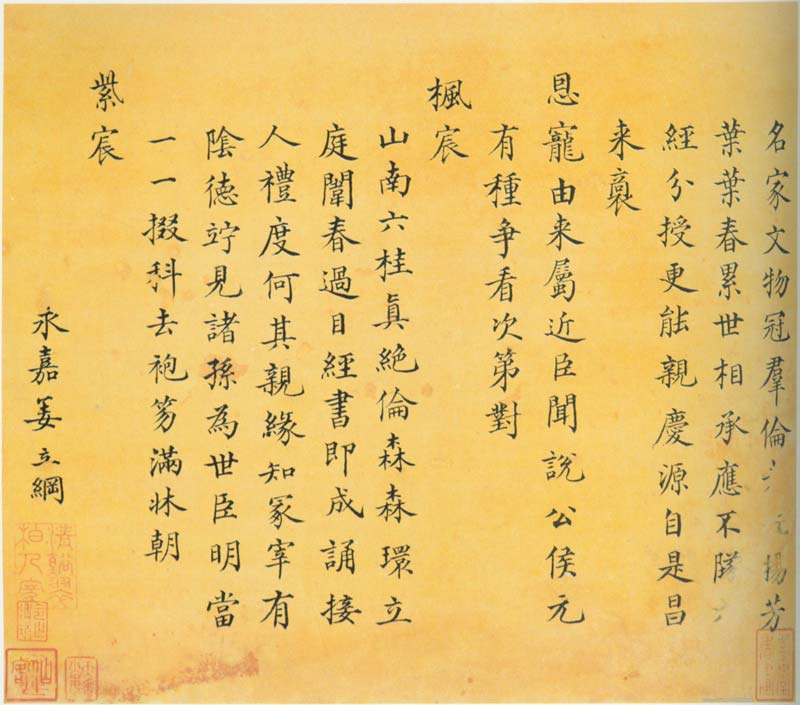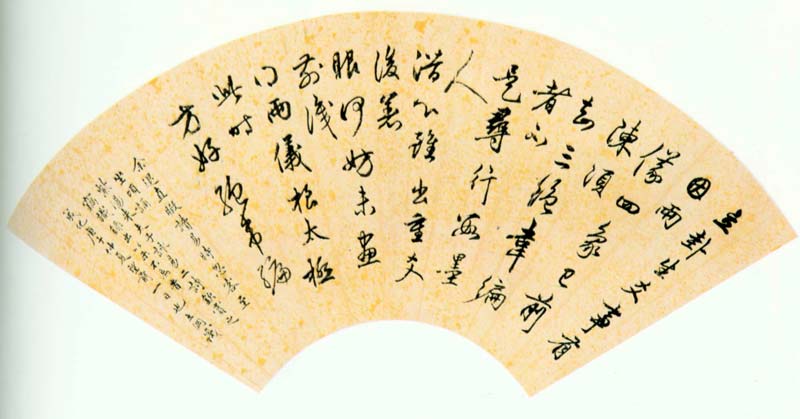Jiang Ligang (1444-1499) An Tingxian, nicknamed Dongxi, was born in Dongxi Village, Meitou, Ruian, Zhejiang. Uncle Kun was good at calligraphy, and he was asked by a student of the Imperial College to "draw Nan Jitai to write the inscription". Jiang Ligang was talented and diligent since he was a child. Due to his family background, he became famous for being "able to read" at the age of 7. He was selected as an odd boy during the Emperor Daizong's reign and was called to Beijing, where he was named a "Scholar of the Hanlin Academy". In the seventh year of Tomorrow Shun (1463), he was granted the title of "Zhongshusheren", a cabinet-level imperial office to serve in the imperial office. In the 21st year of Chenghua (1485), he was promoted to the fifth rank of official doctor. In the fourth year of Hongzhi (1491), he was promoted to the fourth rank of Taipu Temple Shaoqing by transcribing "Xuanzong Shilu". He experienced the four dynasties of Jingtai, Tianshun, Chenghua and Hongzhi in his life, and most of the imperial edicts and palace plaques were made by his hand. Everyone calls his book "Jiang Zi", "Everyone gets a piece of paper and strives to use it as a law."
Huang Meng, a calligrapher from Ruian (who was called Zhongshushe by his good calligraphy in the early years of Yongle), studied calligraphy with Zhong Yao and Wang Xizhi, and later established his own family. He is good at regular calligraphy, elegant and healthy stipple painting, vigorous and vigorous style, fresh and square, and is known as Guange style in the world. "When people get a piece of paper, they strive to use it as a law", and he is known as the "Book Master of a Generation". He also had profound attainments in cursive calligraphy, and was good at landscape painting, which he learned from Zi Jiu. The commentator said that his paintings were small, sparse and graceful, all based on Huangheshan people. He was famous throughout the country for his "good calligraphy" and spread as far as Japan. He was known as the "Book Master of the Generation". The gate of Japan was 13 feet high. He sent envoys to ask for a plaque and set an outline for the calligraphy. Every time the people of his country boasted: "This China has given me the most precious treasure." (He Qiaolin's "Famous Mountain Collection") It has become a good story. "Sanxitang Dharma Tie" contains his ink marks. He died in the twelfth year of Hongzhi at the age of 55. Xiaozong specially ordered Deng Huai, the chief envoy of Zhejiang and the prefect of Wenzhou, to erect a monument at the memorial ceremony. One volume of his posthumous work "Dongxi Calligraphy", which discusses the Eight Methods and Eight Diseases, has been lost. The works handed down from generation to generation include the original poem "Li Taibai Dreaming of Traveling to Heaven and Saying Farewell" in the Ruian Cultural Relics Museum, the cursive script in the central hall, the epitaph in small regular script "Given to the Master of the Ming Dynasty for the Scholarship and the Burial of Liu Gong" (engraved in stone in the fourth year of Hongzhi) and "Chiya Jiang, the general of the Ming Dynasty". Rubbings of "Inscriptions on the Stele of Mr. Newly Built Ancestral Hall" and so on. Fan Qin, the owner of Tomorrow's Yige Library, once said in "Pingshu": "Since Chenghong, Jiang Ligang has been the official in charge of Zhengshu, and he is upright and dignified. He has taken good care of him and practiced it one after another." In addition to being good at regular script, he is also very accomplished in cursive script. , deeply captured the essence of Tang Huaisu.

Jiang Ligang's "Seven Rhythms in Regular Script"

Jiang Ligang's "Ode to Yi Poetry Fan"








